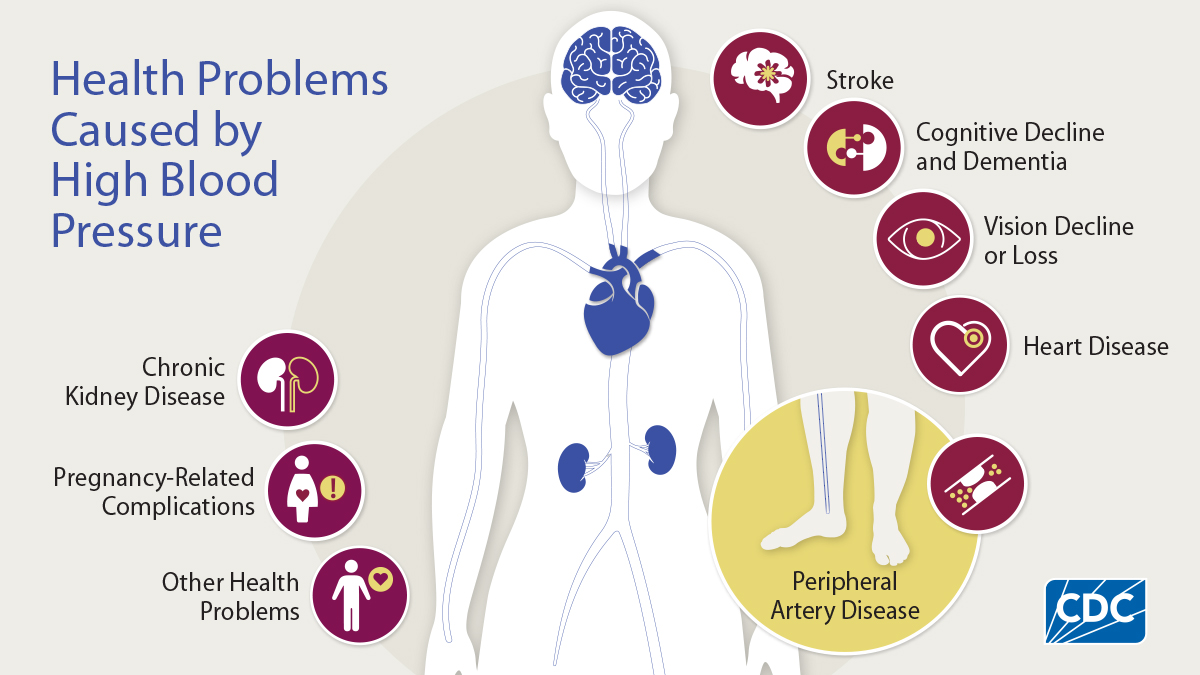The Impact of Lifestyle Factors on Arterial Blood Pressure and Its Control in Hypertensive Patients
DOI:
https://doi.org/10.69667/rmj.25203Keywords:
Hypertension, Cardiovascular Diseases, Lifestyle Factors, Cross-Sectional StudyAbstract
Hypertension, a major global health challenge, is the leading preventable risk factor for cardiovascular diseases. Lifestyle choices—particularly unhealthy diets, physical inactivity, and obesity—play a central role in both its progression and control. These modifiable behaviors drive physiological changes that elevate blood pressure, underscoring the importance of targeted interventions to mitigate cardiovascular risks worldwide. This cross-sectional study examines the association between lifestyle factors—including physical inactivity, obesity, fast food consumption, and smoking—and blood pressure levels among 302 adults in Zawia City, Libya. The analysis revealed significant associations between elevated blood pressure and older age (χ² = 31.773, p< 0.001), lower educational attainment (χ² = 13.756, p = 0.008), and obesity (χ² = 12.124, p = 0.007). Physical activity and vegetable consumption exhibited borderline statistical significance, suggesting potential protective effects. However, no significant associations were observed with gender, marital status, fruit intake, fast food consumption, or smoking, indicating that demographic and body mass index (BMI)-related factors may be more influential in this population. These findings underscore the importance of obesity management, age-specific interventions, and targeted health education for individuals with lower socioeconomic status. The study aligns with existing global evidence on modifiable hypertension risk factors and recommends promoting physical activity, weight control, and diets rich in vegetables. Further longitudinal research is needed to elucidate the observed non-significant trends and strengthen causal inferences.

Downloads
Published
Issue
Section
How to Cite
Similar Articles
- Mariam Alqasser, Stroke Incidence and Risk Profile in Misrata City: A Retrospective Cross-Sectional Hospital-Based Study from Emergency Medical Records (2019–2020) , Razi Medical Journal: Volume 1, Issue 4, 2025 (October to December)
- Sarah Alfaqaih, Nawara Ghlio, Parental Stress and Childhood Cancer in Libya: A Cross-Sectional Study in Misurata , Razi Medical Journal: Volume 1, Issue 3, 2025
- Hawa Abduljalil, Tarik Enaairi, Striae Gravidarum and Its Effect on the Quality of Life Index in Libyan Pregnant Women , Razi Medical Journal: Volume 1, Issue 1, 2025
- Faiza Nouh, Salima Elfagi, Mohamed Buzqeia, Ahlam Adel, Mawadda salah, Enas Hassan, Safa Edress, Determinants of Food Choices in University Cafeterias: A Cross-Sectional Study Among Public Health Students in Libya , Razi Medical Journal: Volume 1, Issue 4, 2025 (October to December)
- Sara Fathi, Heba Hassan, Laila Alfageih, Prevalence of Carbapenem-Resistant Enterobacteriaceae Isolated from Clinical Samples in Medical Tobruk Center , Razi Medical Journal: Volume 1, Issue 3, 2025
- Mahmoud Ashawesh, Mustafa Alkawash, Ayah Meigal, Baraah Almsiri, Abtihal Almasalati, Tracking the Burden of Type 2 Diabetes Mellitus Among Libyan Patients in Three Populated Districts of Tripoli, Libya , Razi Medical Journal: Volume 1, Issue 4, 2025 (October to December)
- Asma Buzgeia, Nazik Hamad, Emaduldin Ateeyah, Mohamed Mohamed, Mohamed EL Fakhri, Utilizing Resources of Drug Information among Community Pharmacists in Benghazi and the Surroundings , Razi Medical Journal: Volume 1, Issue 2, 2025
- Hosam Elarabi, Salem Salem, Rajaa Fadel, Wafa Abozaid, Abdullah Ahmad, Ahmed Shtawa, Moftah Ali, Assessment of Fluoride Concentration in Drinking Water and Its Correlation with Dental Caries in Primary School Children in Gharyan, Libya , Razi Medical Journal: Volume 1, Issue 2, 2025
- Salem Elfard, Zinab Elfituri, Integration of Social and Behavioral Sciences (SBS) in Undergraduate Libyan Medical Education Programs , Razi Medical Journal: Volume 1, Issue 3, 2025
- Nahla Labyad, Masoud Kahmasi, Amjad Mansuor, Awareness, Perception, and Attitudes of Medical Professionals Toward Complementary and Alternative Medicine Devices in Rheumatism: A Survey of Tripoli Community Pharmacies , Razi Medical Journal: Volume 1, Issue 4, 2025 (October to December)
You may also start an advanced similarity search for this article.








